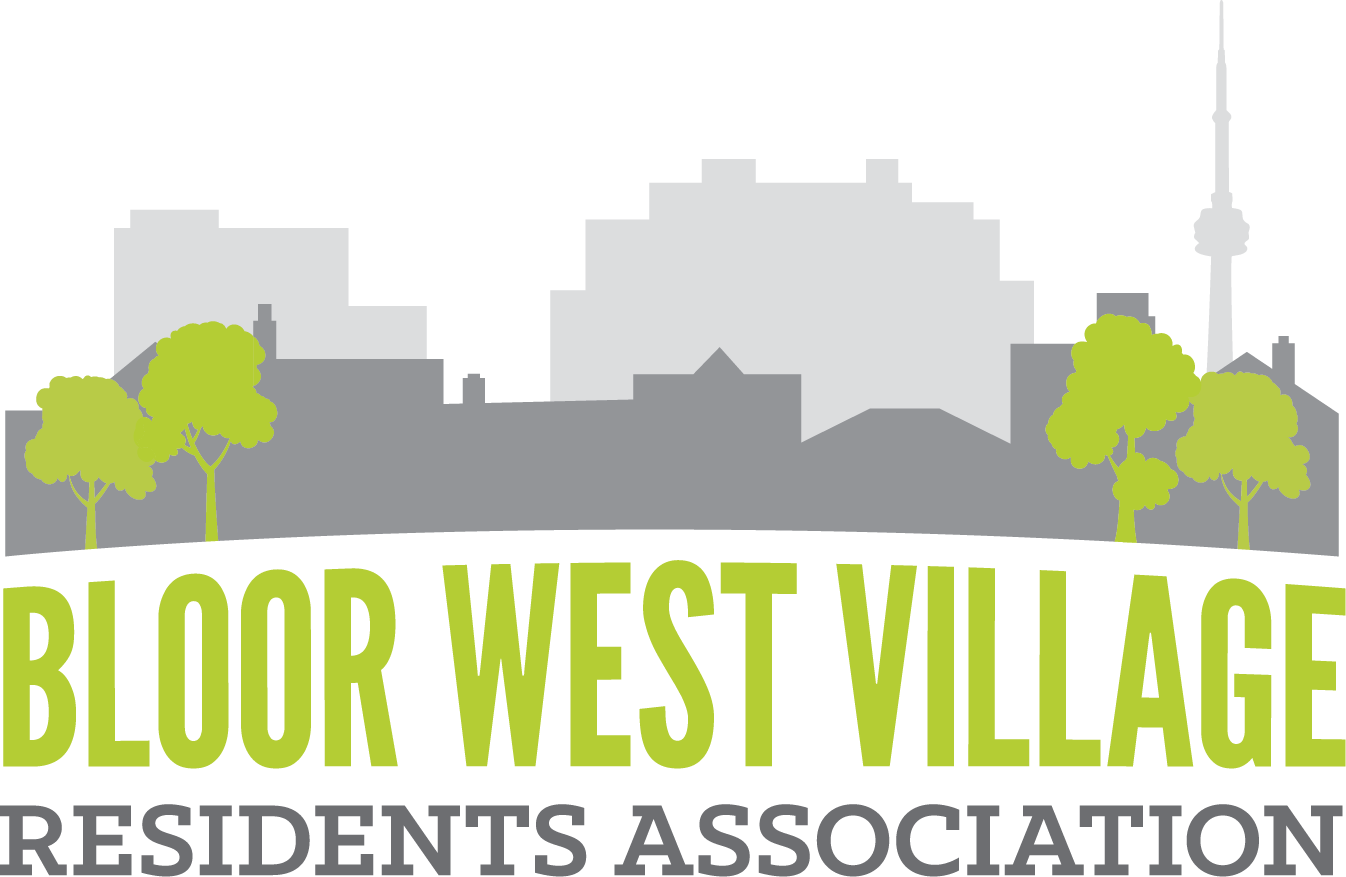The view from your Bloor West Village Residents Association
By Gregory Hamara, Chair, and Steve McNally, Communications Coordinator, on behalf of the Executive of the BWVRA
The Bloor West Village community is getting a building almost nobody wanted on the site of the old Humber Odeon theatre.
How is this possible after two years of thoughtful and restrained opposition by residents west of Jane Street and the BWVRA representing residents east of Jane, four community meetings and a clutch of private ones – including face-to-face meetings with the developer, architects, bureaucrats, and elected officials?
Why will our community end up with a banal development that not only violates the city’s Official Plan, but also ignores the guidelines of the 2004 Bloor West Village Visioning study which states the theatre site “demands architectural excellence” because of its gateway location?
Why are we left only with “conditions” attached by Council to the re-zoning gift which are of dubious, quite possibly, no value. A “green roof” (which nobody asked for) can amount to overgrown scrub grass sitting 10-storeys up, beyond the view of everyone. Units that are “handicapped accessible” which, in the complete absence of fine print (like a building code definition), could well mean nothing more than a ramp up to the building’s front door. It’s all up to the developer, who incidentally, has yet to agree to any of the above “conditions”.
The answer to these questions is troubling. It’s because Toronto has a deeply dysfunctional land development system. It is a system that allows the City to set lofty goals for its development, and to listen to the wishes of its residents, but not to implement either. The City simply does not have the authority to say, in effect, “that building is ugly; go back to the drawing board and come back with something better.” Whenever the City musters the courage to take this sort of stand, it finds itself confronted by the muscle of the provincially-appointed Ontario Municipal Board which routinely raps the city’s knuckles for overreaching its very circumscribed mandate. Official Plans, policies to protect neighbourhoods, are revealed to be little more than empty rhetoric.
In case-after-case the developer wins at the expense of those whose local community and quality of life are most affected by a contentious project.
The specter of the OMB haunts everyone in the development process: politicians (who seek to avoid the expense and aggravation); bureaucrats (whose job it is to keep files moving without the bother of an OMB challenge); architects and designers (whose developer clients say “maximize profit, we can always take it to the OMB.”). Then there are the local residents (whose tax dollars finance the development approval process but who seldom enjoy standing at an OMB hearing because of the enormous costs involved).
The deck was stacked against the community. The Wynn-Bitton group needed only to tolerate a few nights of haranguing at the directionless meetings conducted by Ward 13 Councillor Bill Saundercook, who refused ever to say whether he was for or against. To appear responsive, the developer tinkered with his plan and waited.
The inside players understood that unless the application was approved, the City would have it imposed by the OMB. Little wonder then that Toronto brims with cheaply built, butt-ugly buildings.
The short term concern for Bloor West is that the Humber Odeon sets a precedent . With 10 storeys at Bloor and Jane, what is to stop the next developer from targeting another prominent property in the Village – say, the No Frills parking lot – and argue that a 15-storey development is entirely appropriate?
We’ll have to be ready for that possibility. As a residents association we have learned a great deal from the experience gained, as frustrating as it has been.
We advocated for reasonable changes to the height, design and appearance of the proposed building. We organized meetings with the developer and his representatives. We promoted the BWV Urban Design Study’s call for special treatment of the site. We kept our members and supporters informed of developments. We took our case to the local media. We learned a bit about the Byzantine world of city planning by building bridges to staff at city hall. We lobbied to have conditions attached to the re-zoning, when it became clear that the project was about to be approved.
We now have to watch for promised improvements to the development system. The City is to receive new powers under the City of Toronto Act, and the OMB is supposed to have its powers curtailed by the Province. These are not sexy issues but they are ones we residents have to engage in if we want them to result in some real improvements
For a residents association scarcely one-year old, we’re proud of the role we played, notwithstanding the May 25 outcome at city hall. We hope the experience will serve our community well when Bloor West Village is again faced with a development that affects its future in a major way.
